I recently spent a few weeks testing the ELLIPAL Titan 2.0 crypto wallet, and I have a lot to say about it. As someone who has used several different cold wallets over the years, I was curious to see whether a fully air‑gapped wallet could really fit into my everyday crypto routine.
In this ELLIPAL Titan 2.0 review, I will share my personal experience after months of daily use. I will share what I enjoyed, what annoyed me, and everything in between.
ELLIPAL Titan 2.0 Cold Wallet Overview
Let’s start with the hard facts. The table below summarises the most important specifications, features, and pricing. Knowing these numbers will help you understand the strengths and weaknesses of the device before I dive deeper.
| Device type | Air‑gapped cold hardware wallet (totally offline) |
| Security chip | CC EAL5+ secure element (improved version over the original Titan) |
| Operating system | Proprietary firmware with closed source code |
| Dimensions | 118 × 66 × 9.7 mm |
| Weight | Approx. 140 g |
| Materials | Full aluminium alloy body (sealed) |
| Display | 4.0-inch IPS colour touchscreen |
| Battery | 1400 mAh rechargeable battery (around 5 hours active use; auto‑shutdown saves power) |
| Connectivity | None for data transfer (QR code scanning only); USB‑C used solely for charging |
| Camera | Integrated 5 MP camera for scanning QR codes |
| Account management | Up to ten accounts; five seed phrase wallets and five private key wallets; hidden secondary wallet feature |
| Supported assets | Over 10 000 coins and tokens across 50 + blockchains; unlimited storage capacity |
| App & features | ELLIPAL mobile app for iOS/Android provides buy, sell, swap, staking, and dApp access via WalletConnect |
| Firmware updates | Offline via microSD card |
| Price (2025) | USD 169 (Titan 2.0); optional Seed Phrase Steel for ~USD 49 |
| Warranty | One year |
My Experience With Titan 2.0 Wallet
When I started using the ELLIPAL Titan 2.0, I wasn’t expecting a big change. I had already used a few hardware wallets before, so I thought it would be just another cold wallet with the same kind of feel, but after spending some real time with it, I began to notice the differences in how it works and feels in daily use.
The setup process was quick, clear, and didn’t feel confusing at any point. I powered it on, chose my language, created a new wallet, and wrote down my 24-word recovery phrase. That’s it. No cables. No desktop connection. Just me, the device, and a few on-screen steps.
You’re never plugging it into anything. Not your phone. Not your PC. Everything runs through QR codes, and even though it sounds unusual, once you get used to it, it actually feels safer.
The 4-inch touchscreen made things easier too. It’s like using an old smartphone, and I could easily see everything clearly, no more squinting at tiny screens like with my Ledger Nano X.
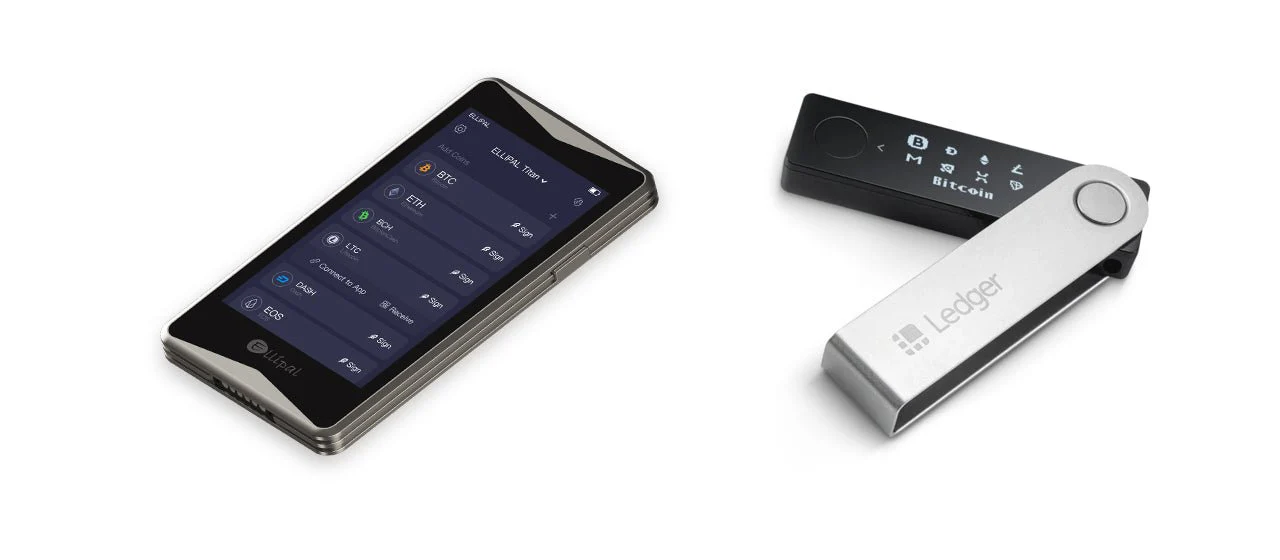
One thing I didn’t like is that there’s no desktop support. You can only use it with your phone. So, that might be a deal-breaker for some. But if you care more about security than flexibility, I believe this is the best cold wallet you need.
Cons and Areas for Improvement
- Bulk and weight. At 140 grams and roughly smartphone size, it is not pocket‑friendly in the same way as a Ledger Nano X or Trezor Safe 5. You will notice it in your pocket or bag.
- Limited battery life. Five hours of active use is fine for occasional transactions, yet you will need to charge it regularly if you use it frequently. The magnetic charging adapter is prone to disconnecting if nudged.
- Dependence on a smartphone. You cannot manage or sign transactions without your phone and the ELLIPAL app. Some users prefer a device that can connect directly to a computer via USB when needed.
- Closed-source firmware. The QR code protocol is open, but the device’s firmware is not. Security‑conscious users may hesitate to trust a black‑box system. Competing cold storage wallets like Trezor use open‑source firmware for greater transparency.
- Limited swapping, buying, and staking support. Only a few dozen assets are available for swapping or buying with fiat, and staking is limited to five coins. If you rely heavily on these features, you might need a separate DeFi wallet.
- Camera issues for some users. Several user reports mention the camera failing to focus or not scanning QR codes properly. In my own testing, the camera worked but required strong lighting. A higher‑quality camera or improved software would help.
Design and Build Quality
The Titan 2.0 looks and feels like a rugged smartphone. The 4‑inch touchscreen is bright and sharp. I could read transaction details and addresses without squinting, which is a huge improvement over tiny OLED displays on many competitors.
The touch response is smooth; it feels like using a small Android device, albeit one that only runs one app.

The body is made from a single piece of aluminium alloy, and it is sealed so tightly that there are no seams. Dropping it on my wooden floor didn’t leave a mark. According to the manufacturer, it is also dust‑ and water‑resistant, though I didn’t test it in extreme conditions.
The robust build enhances physical security but also adds bulk…
Battery Life and Charging
Inside is a 1400 mAh battery. With moderate use, checking balances and signing a couple of transactions per day, it lasted about five hours before needing a recharge.
That may sound short compared to a phone, yet remember, you probably won’t be using this wallet continuously. An auto‑shutdown feature turns the device off after a few minutes of inactivity, which preserves the battery. In standby mode, the device can last for over 250 hours.
Now, charging is done via the security adapter, a small magnetic dock that connects to the bottom of the wallet. The dock itself plugs into a USB‑C cable. A full charge takes roughly one and a half hours.
Because the adapter uses magnets, it can disconnect easily if you bump it; you need to place the device on a flat surface during charging.
Camera and QR Code Scanning
Transactions are signed via QR codes, and the wallet has a 5 megapixel camera on the rear for scanning. In my experience, the camera is adequate, but you need good lighting.
Under a bright desk lamp, it scanned QR codes quickly. In dim light, the camera sometimes struggled to focus.
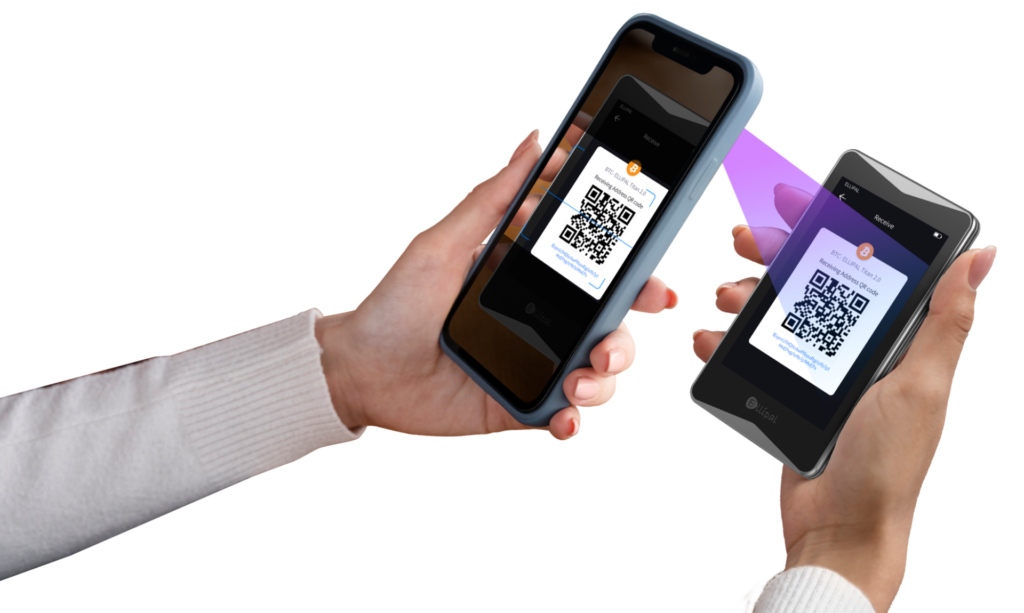
A simple tip: increase your phone’s brightness and hold the wallet steady under a bright light source. Still, I would like to see a better camera in the next model.
Unboxing and First Impressions
I tend to judge a hardware wallet from the moment I remove the plastic. With the ELLIPAL Titan 2.0, the box felt premium. Inside you will find:
- The Titan 2.0 itself, wrapped in foam and sealed in plastic.
- A security adapter that doubles as a charging dock; it attaches magnetically.
- A USB‑C charging cable, which plugs into the security adapter.
- A microSD card, used only for offline firmware updates.
- Two seed phrase recovery sheets for writing down my 12‑ or 24‑word backup.
- A user manual with small print but clear illustrations.
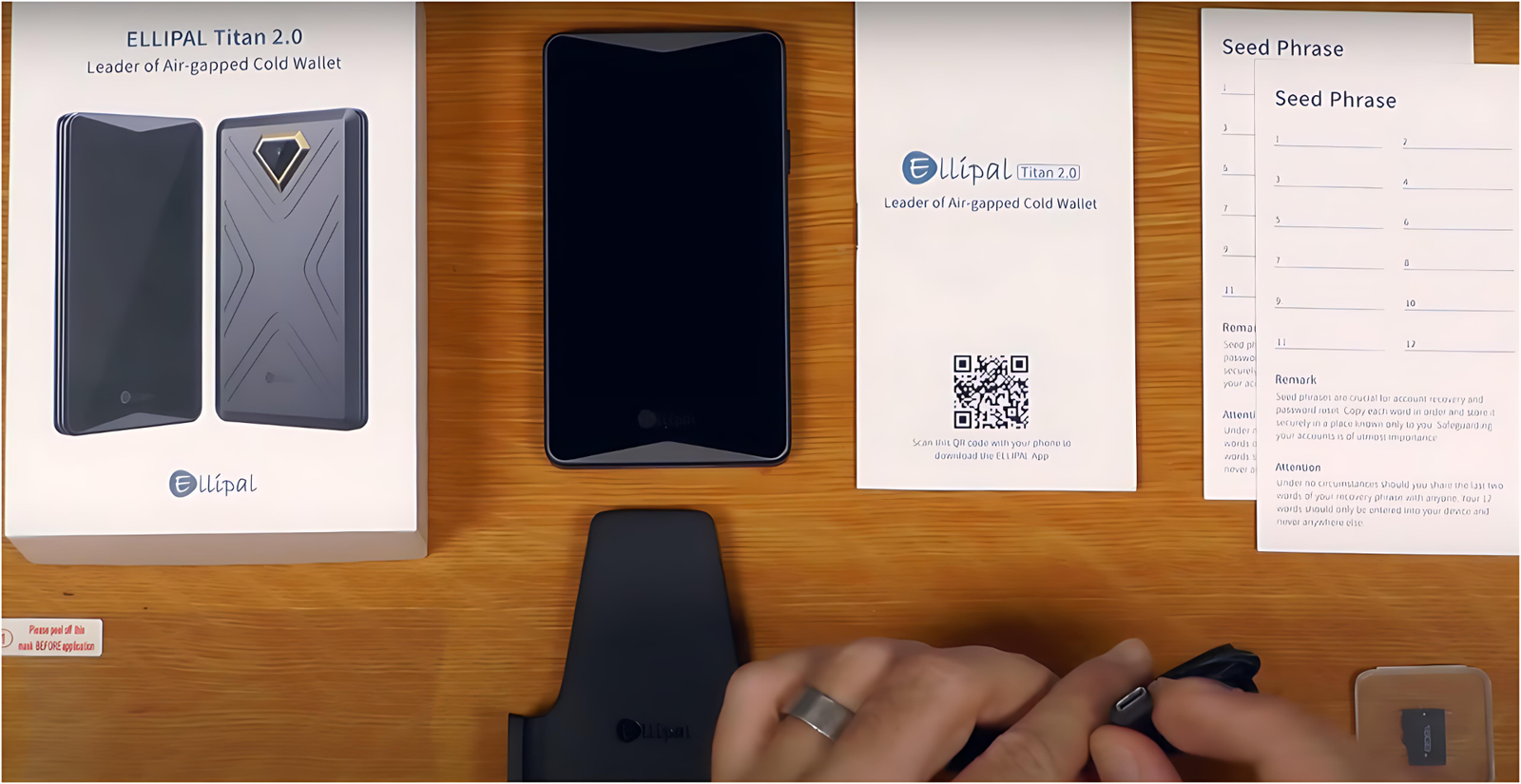
Holding the device in my hand, I could feel the weight. At around 140 grams, it is closer to a compact smartphone than to a thumb drive like a Ledger Nano X.
The aluminium body is sealed tight; you cannot open it without destroying it, and that is by design. It looks like a miniature rugged phone with a bright colour screen on the front and a camera on the back. No ports are visible except the contacts on the bottom that magnetically click into the security adapter.
How You Can Set Up: Creating an Account and Pairing the App
Setting up the Titan 2.0 was straightforward but different from other hardware wallets I have used.
Step 1: Create a new account
On the device, you need to tap “Create Account,” choose a name, and set a password. The wallet then displays a 24‑word seed phrase (you can choose 12 words if you prefer). You have to write each word down on the supplied recovery sheet. There is no option to skip this; the device insists you back up your seed phrase before proceeding.

Step 2: Verify the seed phrase
To make sure you wrote it down correctly, the device asks you to re‑enter certain words. This step is important; mistakes are painful later.
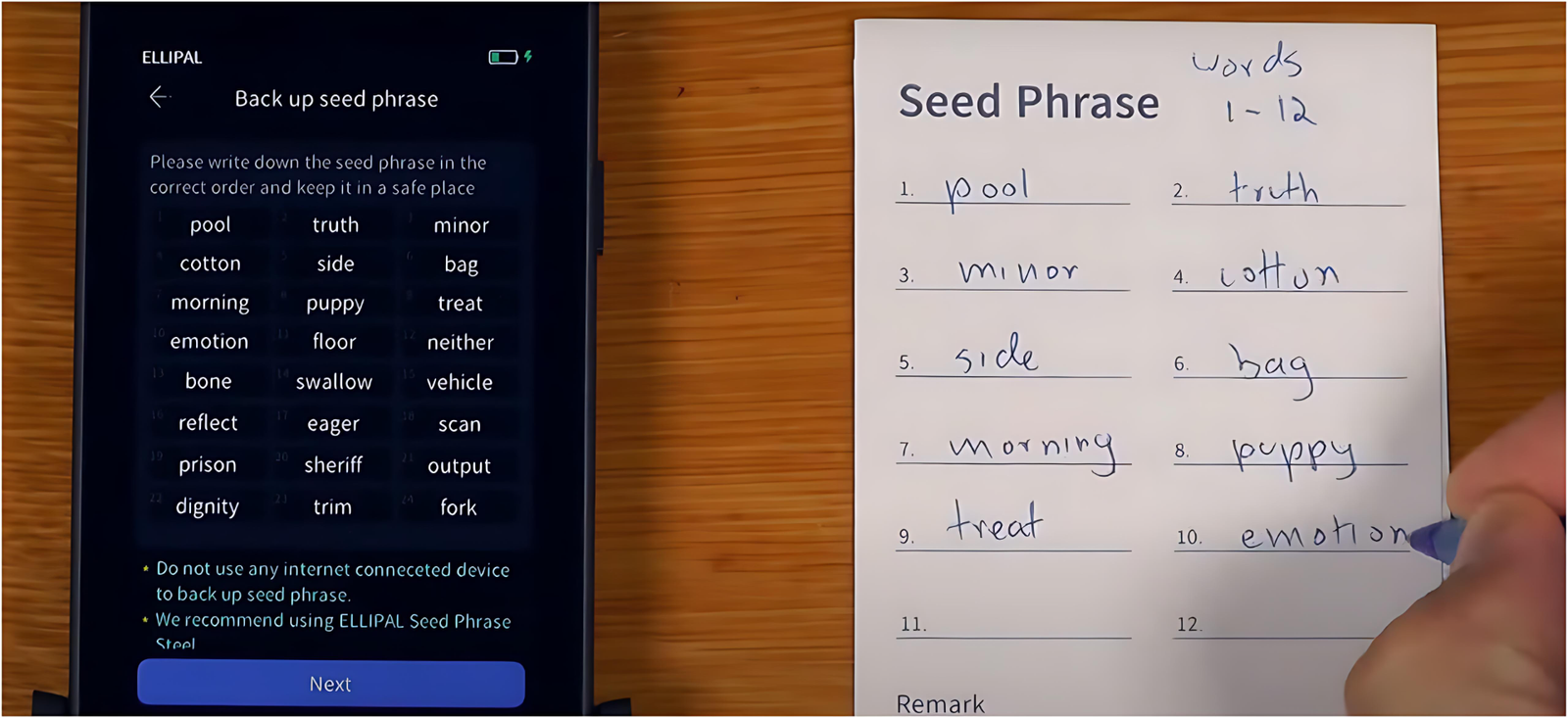
Step 3: Connect the mobile app
Now, download the ELLIPAL App from the Google Play Store on your Android phone. On the app, you can select “Cold Wallet → Connect to Cold Wallet.”
The phone displays a QR code. On the Titan, you have to select “Connect to App,” and it scans the code using its built‑in camera. The phone and the device link without any data, leaving the offline environment; only a handshake via QR happens.
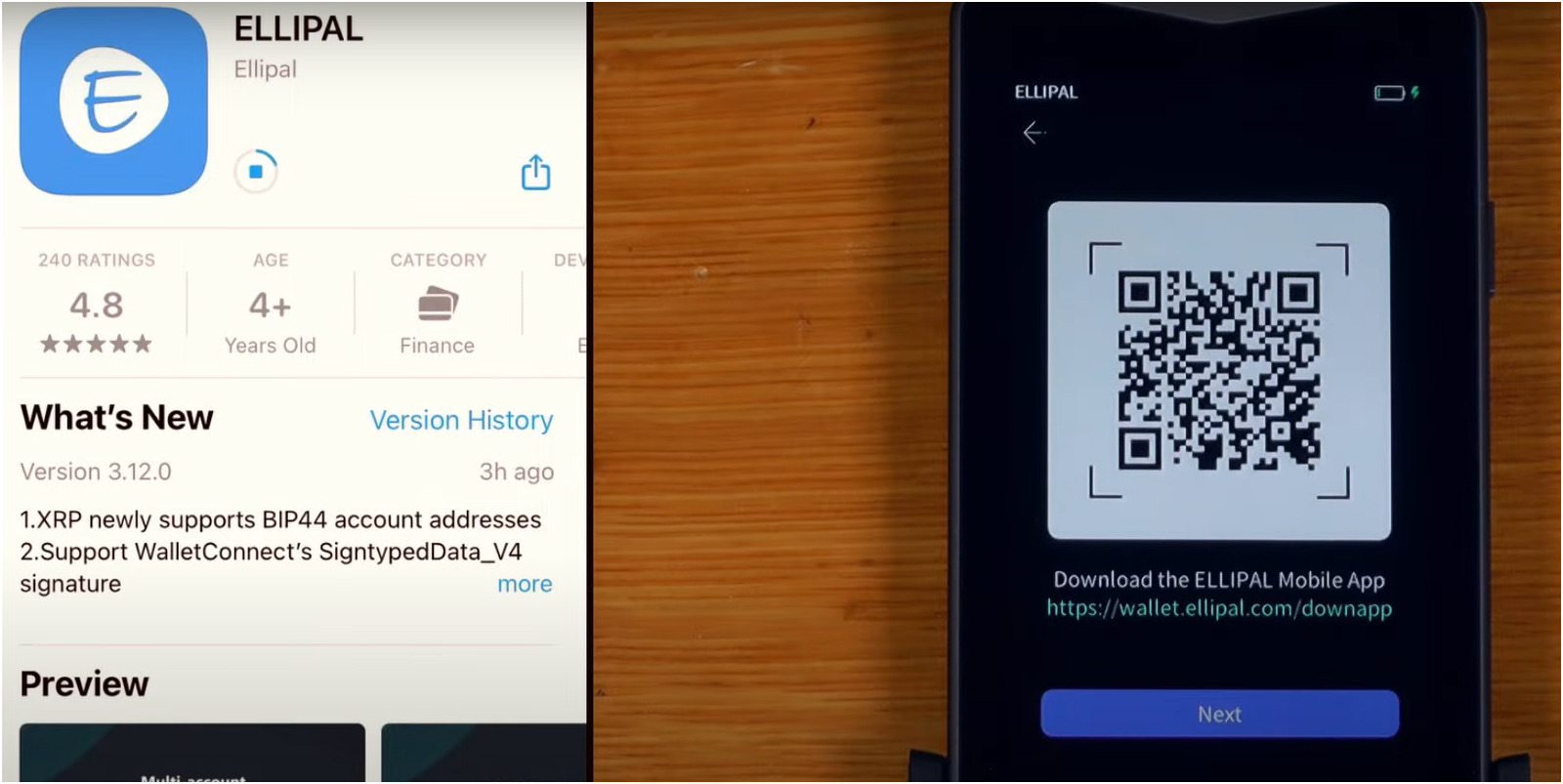
Step 4: Create additional wallets or import existing ones
The device allows multiple seed phrases or private key wallets. You can import an older private key by entering it manually; there is no way to import via file or network, which reinforces the air‑gapped design.
After pairing, the mobile app displays your balances and transaction history. The app acts as an interface for the blockchain; all signing happens on the Titan, and the signed transaction is then transmitted via QR code back to the app to broadcast to the network.
This handshake takes a few seconds longer than a simple USB connection, but it means your private keys never touch an internet‑connected device.
Firmware Updates
You know, one of the more annoying aspects of many hardware wallets is firmware updates. ELLIPAL mainly does them fully offline using the supplied microSD card.
- Download the firmware file from the official website on your laptop.
- Copy it to the microSD card (FAT32 format) and eject the card safely.
- Insert the card into the slot hidden at the bottom of the wallet. You need to remove a small rubber cover first.
- Open the settings on the device and select “Update Firmware.” The device verified the file and started updating. It will take about six minutes and requires the battery to be above 50 percent. The device rebooted afterwards.
Well, I appreciated that there was no need to connect to a PC or trust any cable. On the negative side, the microSD card slot is not very obvious, and it can feel fiddly; plus, the card is easy to misplace.

User Experience: What It’s Like to Use Daily
During my test period, I sent and received several types of cryptocurrency using the Titan 2.0. Here are my observations.
Sending Crypto
- Create the transaction in the app. On the phone, you need to choose the asset, enter the recipient address and amount, and tap “Send.” The app will generate a QR code containing the unsigned transaction.
- Scan and sign on the Titan. On the wallet, select “Sign Transaction” and scan the QR code with the camera. The device will display all transaction details on its large screen: addresses, amounts, and fees. You have to verify them and tap “Confirm.” The device asked for my password, then generated a signature QR code.
- Broadcast the transaction. Back in the app, tap “Scan Signed Transaction” and point the phone’s camera at the Titan’s screen. The app reads the signature and broadcasts it to the network.
The entire process took less than two minutes, and I felt secure because I could see exactly what I was signing. I liked not having to fiddle with tiny buttons, as on some other hardware wallets like Ledger Nano X.
The downside is that scanning back and forth can feel slow compared to a direct USB transaction.
Receiving Crypto
Receiving funds is straightforward. On the app, you need to tap “Receive,” select the asset, and scan the address with the Titan. The address appears as a QR code on the device’s screen.
You can also display your address on the Titan alone, which is safer because you are not exposing it on your phone, though addresses can be viewed publicly anyway.
Mobile App Usability
The ELLIPAL app is clean and modern. It shows balances, transaction history, and current market prices. I found the price charts simple but helpful.
The app also acts as your gateway to swapping, buying, and staking. For dApp use, it relies on WalletConnect; you scan a QR code on your computer or another device and then approve the transaction on the Titan. Everything is intuitive if you are familiar with crypto basics.
One limitation is that you always need your phone nearby. Unlike certain wallets that connect directly to a PC via USB, the Titan cannot operate stand‑alone except for viewing addresses.
If your phone’s battery dies or the app crashes, you cannot sign transactions until you fix the issue. I personally don’t mind because I always have my phone with me, but some users may prefer a more self‑contained device.
You can also read my list of the best cold storage wallets for altcoins…
Security Features: I Find It More Than Just Air‑Gapped

The marketing emphasises that the Titan 2.0 is completely air‑gapped, but that is only one part of its security story. Here is what impressed me:
- No network connectivity whatsoever: There is no Wi‑Fi, Bluetooth, NFC, or USB data port. All data enters or leaves through QR codes, and yes, that design eliminates a huge attack surface. In fact, I sometimes forgot to disable Bluetooth on my phone because it simply doesn’t matter when using this wallet.
- Certified secure element: The device contains a CC EAL5+ secure element chip. That is the same security level used by many payment cards and passports. It stores your private keys and performs cryptographic operations internally. The keys never leave the chip.
- Self‑destruct mechanism: If someone tries to physically open the case, remove the back, or tamper with the circuitry, the wallet automatically erases all data. You cannot repair it afterwards, but you can always recover your coins using your seed phrase on another wallet. This feature guards against so‑called “evil maid” attacks, where someone has physical access to your device for a short time.
- Pin and passphrase protection: You set a numeric password and a gesture PIN. The device will wipe itself after several failed attempts. You can also add a 25th word (a passphrase) to your seed, which acts as a hidden wallet; without the correct passphrase, your main wallet appears empty.
- Secret secondary wallet: There is an option to create a secondary hidden wallet protected by a separate password. In a coercion scenario, you could hand over the primary wallet while keeping most of your funds in the hidden one.
- Open‑source QR code protocol: Even though the firmware is proprietary, the QR code format used for signing and broadcasting transactions is open source. That means anyone can verify the data being transferred. You see exactly what you sign on the large screen.
Supported Assets and Web3 Integration
One of the key selling points of ELLIPAL is the number of coins and tokens it can hold. The Titan 2.0 supports over 10,000 tokens across more than 50 blockchains, including Bitcoin, Ethereum (and all ERC‑20 tokens), Solana, BNB Smart Chain, Cardano, XRP, Tron, Avalanche, Polygon, Cosmos, and many others.
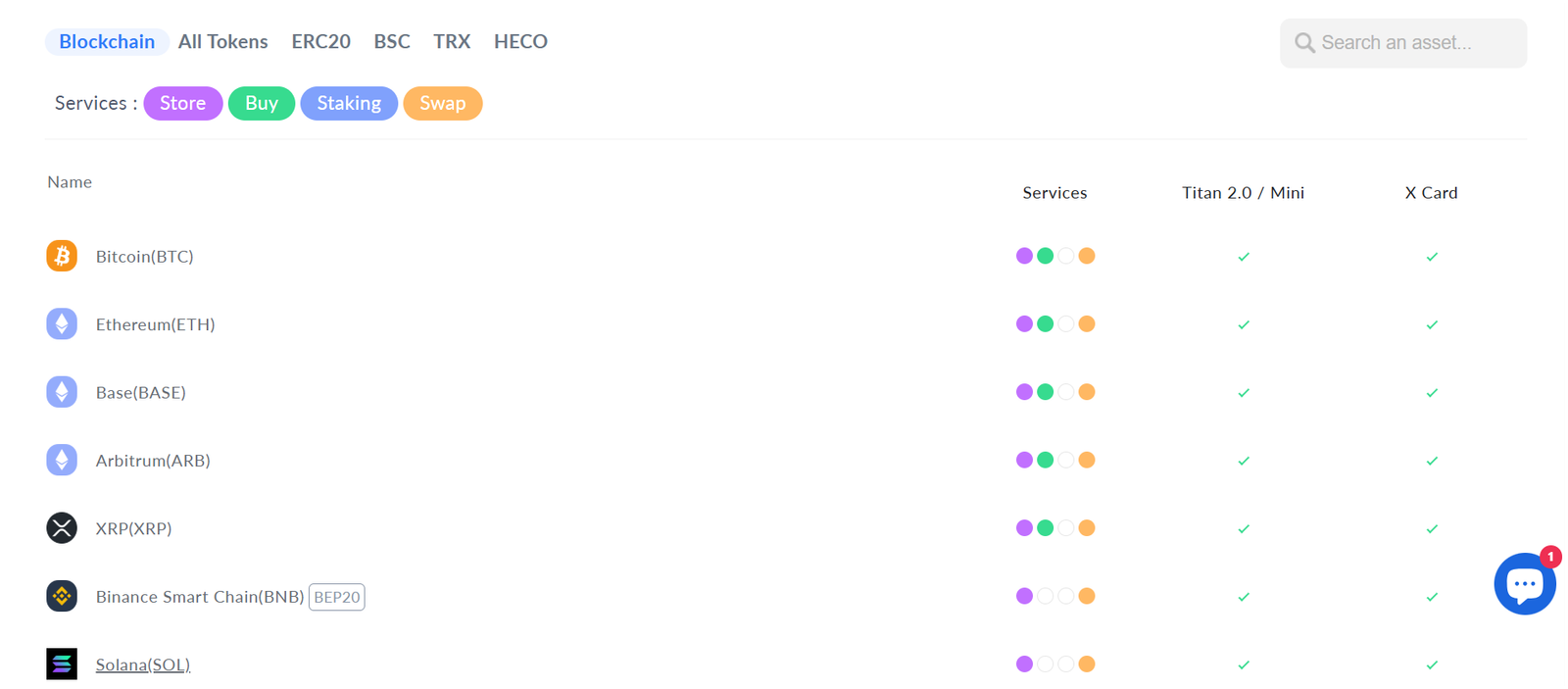
And even, you can manage multiple seed phrases and private key accounts on the same device, essentially making it a multi‑wallet hub.
Through the ELLIPAL mobile app, you can also easily gain access to:
- Swapping: You can swap selected coins directly within the app. The actual number of supported swap pairs is around 32 at the moment, which is far fewer than the thousands of tokens supported for storage. Still, it covers most major assets.
- Buying and selling: The app integrates with third‑party providers like MoonPay and Simplex. Only about 14 coins can currently be purchased with fiat, and you need to complete KYC with those providers. Selling back to Fiat is also possible, but limited.
- Staking: You can stake several coins directly from the wallet through the app. As of 2025, supported staking coins include Cardano (ADA), Polkadot (DOT), Cosmos (ATOM), Kusama (KSM), and Tezos (XTZ). Rewards are displayed in the app.
- dApps and NFTs: WalletConnect integration lets you connect to more than 200 decentralised applications. I used it with Uniswap and OpenSea. The process involves scanning QR codes back and forth, which is slower than using a hot wallet but far safer.
Now, with unlimited storage capacity, you will never have to worry about filling up the device. In contrast, some hardware wallets only let you install a handful of apps at a time. Here, the limits lie in the mobile app’s features, not in storage.
I just hope the company expands the list of supported swap pairs and staking options over time…
Price, Value, and Availability: Where Can I Purchase?
At $169, the Titan 2.0 sits above entry‑level hardware wallets yet below some premium devices. The price includes the wallet, security adapter, cable, microSD card, and seed phrase cards.
A one‑year warranty is standard. The optional Seed Phrase Steel costs around $49; it lets you engrave your recovery phrase onto metal for fireproof and waterproof storage.
Ordering directly from ELLIPAL’s official website is recommended. They ship globally from warehouses in Hong Kong, the United States, Germany, Canada, and Australia.
Some third‑party resellers also stock the device, but be careful of counterfeit products and hidden import fees.
Comparing With Other ELLIPAL Models
The other two ELLIPAL cold wallets are ELLIPAL Titan mini and ELLIPAL X Card. Here is a quick ELLIPAL Titan 2.0 vs. Mini and ELLIPAL Titan 2.0 vs. X Card comparison:
| Criterion | Titan Mini | Titan 2.0 | X Card (with Starter) |
|---|---|---|---|
| Secure Element | CC EAL5+ certified | CC EAL5+ certified | CC EAL6+ certified |
| Form Factor | Compact metal body (75×71×10.5 mm; ~112–120g) | Larger aluminum body (118×66×9.7 mm; ~140 g) | Credit‑card size, ultra‑thin card form |
| Display & UI | 2.4–2.7″ HD touchscreen | 4.0″ IPS touchscreen | No screen; use NFC tap via App; Starter device handles setup |
| Battery & Power | 600 mAh, multi-day standby | 1400 mAh, longer usage between charges | No battery in the card — powered by Starter device/phone NFC |
| Supported Assets | 10,000+ tokens across ~40 blockchains; includes NFT support | 10,000+ coins/tokens; NFTs supported; unlimited storage | 10,000+ tokens across 40+ blockchains; supports imported seeds; no NFT support noted |
| Connectivity | Air-gapped QR via camera; no USB/Bluetooth/Wi‑Fi | Air-gapped QR; completely offline; anti‑tamper design | 100% air‑gapped; NFC only (no USB, Wi‑Fi, Bluetooth) |
| Price (approx.) | $99 (bundle ~$129) | $169 (bundle ~$199) | $99 for 1 card; $118 for 3-pack (pre-order) |
What are the Other Alternatives
The competitors of ELLIPAL Titan 2.0 cold wallets are Ledger Nano X, Trezor Safe 5, Keystone 3 Pro, and BitBox02. Also, if you are looking for more crypto wallets, check out my guide on the best crypto hardware wallets…
| Image | Cold Wallets | Price |
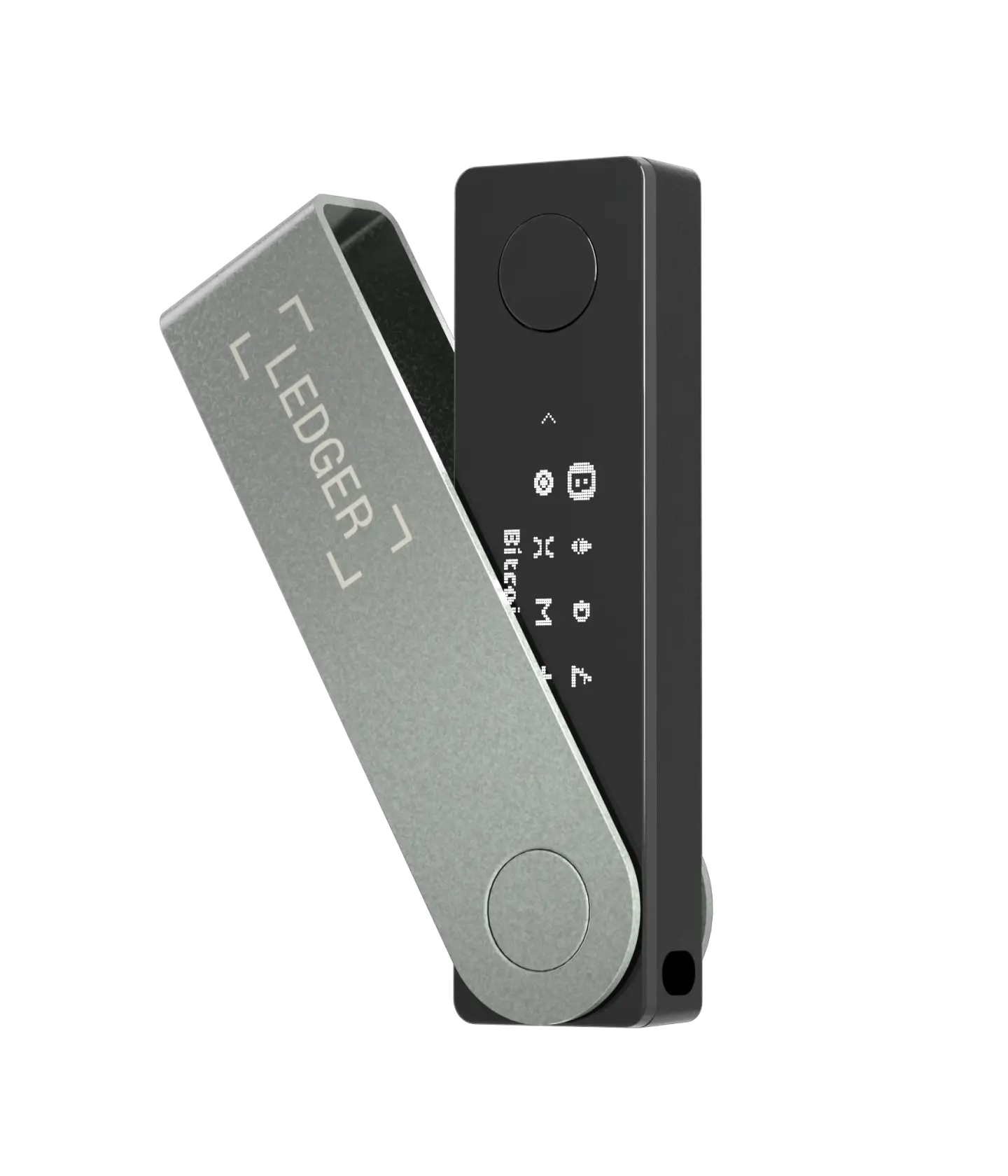 |
Ledger Nano X |
$129.00
|
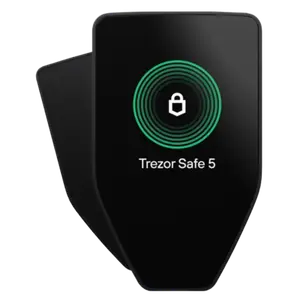 |
Trezor Safe 5 |
$169.00
|
 |
Keystone 3 Pro |
$129.00
|
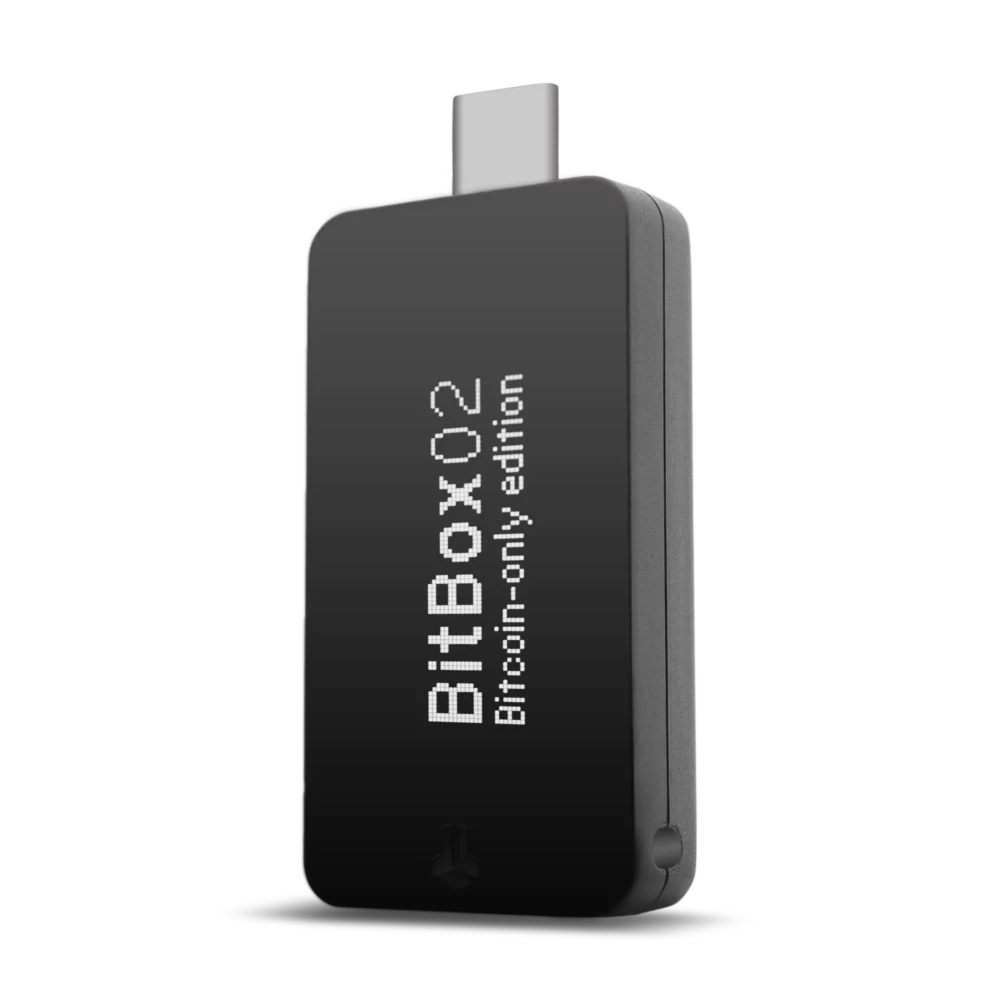 |
BitBox02 |
$124.00
|
You can read my in-depth Ledger Nano X review for more details…
My Final Verdict on ELLIPAL Titan 2.0 Review
After spending considerable time with the ELLIPAL Titan 2.0, my verdict is clear: it is a highly secure yet somewhat specialised cold wallet. The air‑gapped design, robust metal case, and large screen make it a safe vault for long‑term holdings. You feel reassured watching your transaction details on a bright display without worrying about cables or Bluetooth.
However, the wallet’s size, dependence on a phone, limited on‑device features, and closed-source code may deter some users.
Can I buy, swap, or stake crypto and access DeFi dApps directly from the ELLIPAL Titan 2.0?
No, you can’t do all that directly from the Titan 2.0 device itself. As I discussed before, the wallet is air-gapped and works completely offline, and that means it has no internet access, no browser, and no app store like MetaMask.
But yes, you can connect it with the ELLIPAL mobile app, and the app lets you swap crypto using third-party services like MoonPay, Simplex, and Changelly. It also supports some staking options. DeFi dApps can be accessed through WalletConnect, but again, you’ll be using your phone, not the device.
Is the Titan 2.0 beginner-friendly for first-time cold wallet users?
Yes, I’d say it’s beginner-friendly, but only if you’re okay with using QR codes. The whole interface is touchscreen-based, and it walks you through setup steps one by one. You don’t need to install software or plug into a computer.
Most people find the UI smooth and readable. The only part that may confuse new users is the QR code signing process. It takes a few tries to get used to it. But once you understand it, it feels secure and clean.
Can you hack my ELLIPAL cold wallet?
No, it is very difficult to hack if you follow all security practices correctly. Buy gain, due to your own mistake, yes, it can be hacked. Even if someone gets physical access, the device auto-wipes when tampered with.
Firmware updates are also verified before installing. Most hacks happen because people store their seed phrase in insecure places or use infected phones. So, as long as you don’t do that, it’s very safe to use.
